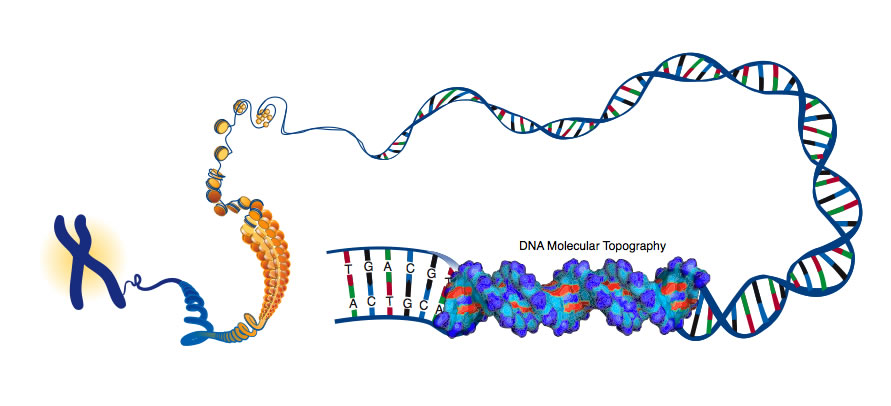A chromosome is the structure for the efficient packaging of DNA that is found in the cellular nucleus. Humans have 23 chromosome pairs, typically one maternal and one paternal of each. The chromosome number will vary in some cases of viable aneuploidies.
Each chromosome has 2 “arms”

This illustration depicts DNA packed tightly into chromosomes, as well as a DNA molecule unwound to reveal its 3-D structure | credit: NHGRI https://www.genome.gov
When the chromosomal complement is BALANCED (any multiple of 23), it is EUPLOID
When the chromosomal number is NOT BALANCED, it is ANEUPLOID
Besides additional whole or missing chromosomes, chromosomes can have other structural changes, such as deletions (del), duplications (dup), insertions (ins), inversions (inv), many of which are associated with recognizable genetic syndromes, for example:
Not all structural changes have significance
NIH: NHGRI – Chromosome Abnormalities
The ObG Project is in no way affiliated with any outside entity or professional organization
Are you an
ObG Insider?
Get specially curated clinical summaries delivered to your inbox every week for free
Please log in to ObGFirst to access this page
OBG Project CME requires a modern web browser (Internet Explorer 10+, Mozilla Firefox, Apple Safari, Google Chrome, Microsoft Edge). Certain educational activities may require additional software to view multimedia, presentation, or printable versions of their content. These activities will be marked as such and will provide links to the required software. That software may be: Adobe Flash, Apple QuickTime, Adobe Acrobat, Microsoft PowerPoint, Windows Media Player, or Real Networks Real One Player.
This educational activity may contain discussion of published and/or investigational uses of agents that are not indicated by the FDA. The planners of this activity do not recommend the use of any agent outside of the labeled indications.
The opinions expressed in the educational activity are those of the faculty and do not necessarily represent the views of the planners. Please refer to the official prescribing information for each product for discussion of approved indications, contraindications, and warnings.
Participants have an implied responsibility to use the newly acquired information to enhance patient outcomes and their own professional development. The information
presented in this activity is not meant to serve as a guideline for patient management. Any procedures, medications, or other courses of diagnosis or treatment discussed or suggested in this activity should not be used by clinicians without evaluation of their patient’s conditions and possible contraindications and/or dangers in use, review of any applicable manufacturer’s product information, and comparison with recommendations of other authorities.
It appears you don't have enough CME Hours to take this Post-Test. Feel free to buy additional CME hours or upgrade your current CME subscription plan
You are now leaving the ObG website and on your way to PRIORITY at UCSF, an independent website. Therefore, we are not responsible for the content or availability of this site
